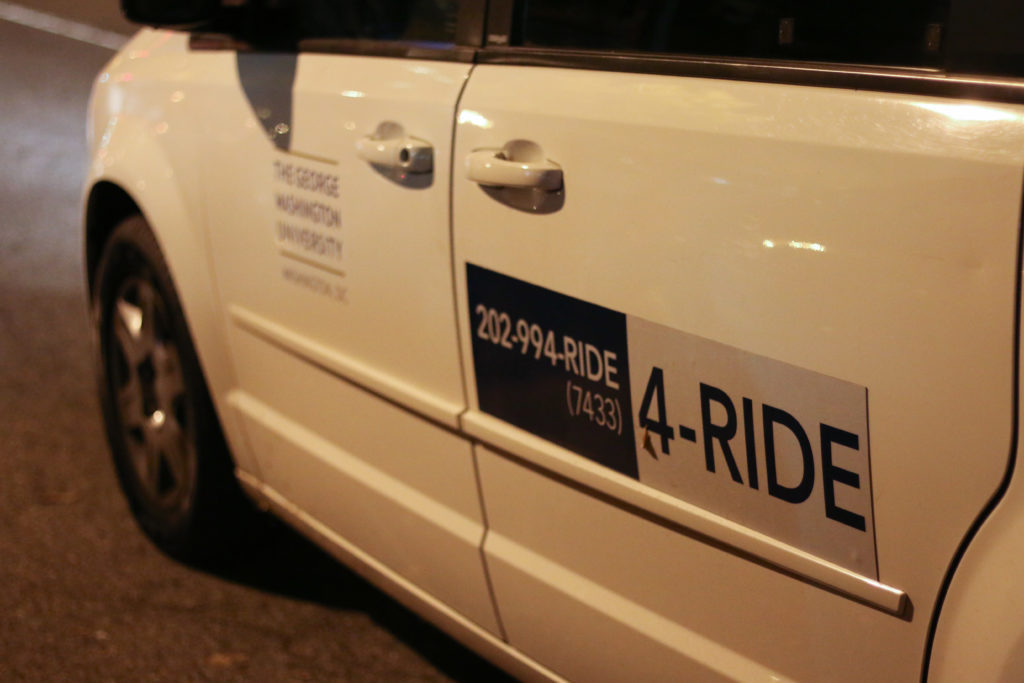Dozens of students have criticized the University’s 4-RIDE transportation service for long wait times and no-show drivers, but those behind the wheel said students’ concerns are out of their control.
Five 4-RIDE drivers – who spoke under the condition of anonymity for fear of retribution from the University because they are not authorized to speak with the media – said a lack of drivers, an outdated communication system and late students hinder their ability to operate the service effectively. Drivers said they are often delayed in picking up and dropping off students as late and no-show students add up on their list of requests.
4-RIDE is a transportation service provided to students who do not want to walk alone between 8 p.m. to 4 a.m. The rides are free and can be requested by either calling a dispatcher or logging into an online portal. After requesting a ride, students receive a text when their driver is on the way to pick them up, drivers said.
But drivers said the communication system that students use to request a ride, Navman, is outdated compared to apps like Uber because the technology does not tell students how far drivers are from their location. The system was adopted in 2011.
One driver said he typically receives 15 to 20 no-show students on a rainy night and fewer late students on nights without inclement weather. Drivers are required to wait three minutes for students who don’t show up before leaving, which causes them to be at least three minutes late to the next student, they said.
“For the call times and all that, that’s where everything is late,” the driver said. “They need to update this. That’s what this needs. A lot of people say they don’t get picked up and their ride arrived late and everything.”
University spokeswoman Maralee Csellar said the current system assigns dispatchers to transport requests, and drivers are given GPS signs “that provide on-demand vehicle location information” to drivers and passengers.
“While our goal is to be as fast and efficient as possible, there is a short wait for 4-RIDE services with longer wait times during peak/busy periods,” Csellar said in an email. “We ask that students be ready at the appointed pick-up time.”
Another driver said students not showing up for their ride is just as much of a problem as drivers being late for pickups and can cause an entire shift to fall behind schedule.
The driver said 4-RIDE is a good service, and most students appreciate the rides. But for 4-RIDE to work efficiently, students who use the service need to be on time, the driver said.
“If I’m getting six pickups, it’s going to take me at least 10 minutes to get to all of them in a reasonable time,” the driver said. “And that doesn’t even count when you have to stand and wait for someone who doesn’t come out.”
The driver said the staff does not have control over whether they can get to a student on time because the student does not know where the driver is located using Navman. The driver said roughly six drivers on the road each night also struggle to accommodate the average 150 requests they could receive from students.
Csellar, the University spokeswoman, said the number of drivers over the past three academic years has “remained steady” with an average of 12 total drivers. Officials are currently recruiting a new driver after a recent departure and anticipate filling the position by the spring, she said.
She said the number of 4-RIDE vehicles varies by day of the week and time of the day based on how many students historically used the service. During “pre-identified peak” times, more vans are on the road to keep up with the demand of students, she said.
“The University continues to monitor ride requests and makes adjustments to the number of vehicles on the road periodically throughout the semester,” she said.
A third driver said that if the service started with more vehicles on the road a night, the additional manpower could help the system move more smoothly.
“We don’t have enough drivers to do what we need to do, to provide the proper service for you all, the students,” the driver said.
The driver said Uber has a better tracking system than that of 4-RIDE. On the app, a patron can see what the driver looks like and what corner they’re about to turn onto – features the drivers said would help many notification-dependent students be on time.
“We’re not like Uber, so you can’t really track us,” the driver said. “You can only go by what the machine says and so forth. But I do feel like if the people were downstairs and waiting, it would help.”
Sarah Roach contributed reporting.





